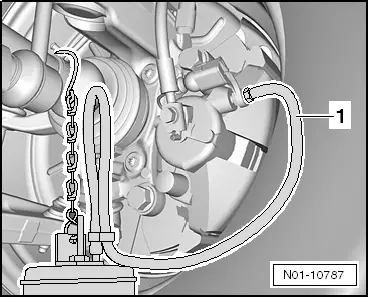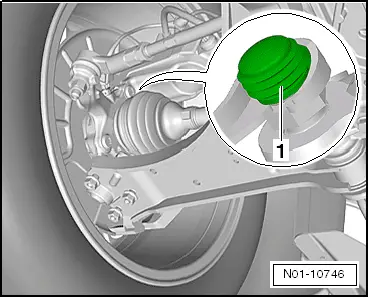| –
| Beginning with the right rear wheel, connect the bleeding hose -1- of the collecting bottle -SAT 1175B/1-to the bleeder screw of the brake calliper / cylinder. Do not loosen the bolt yet. |
| –
| Keep pressing the brake pedal controlled for building up the pressure in the cycle. |
| –
| Press the brake pedal with force and maintain pressure while the second mechanic opens the bleeder screw, to which the collecting bottle -SAT 1175B/1- is connected. |
| –
| Close the bleeder screw if the brake pedal reaches the end of its pedal travel. Then slowly loosen the brake pedal |
| –
| Repeat the two operations described above until it is observed that the brake fluid appears without air bubbles. |
|
|

|
 Note
Note Note
Note

 Note
Note
 Note
Note Note
Note

 Note
Note